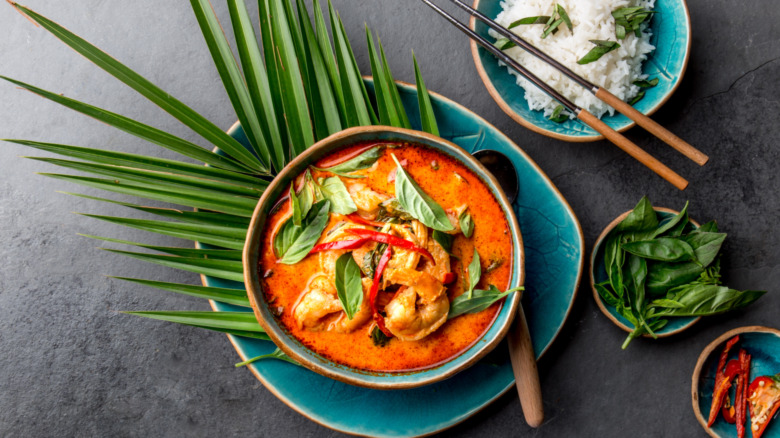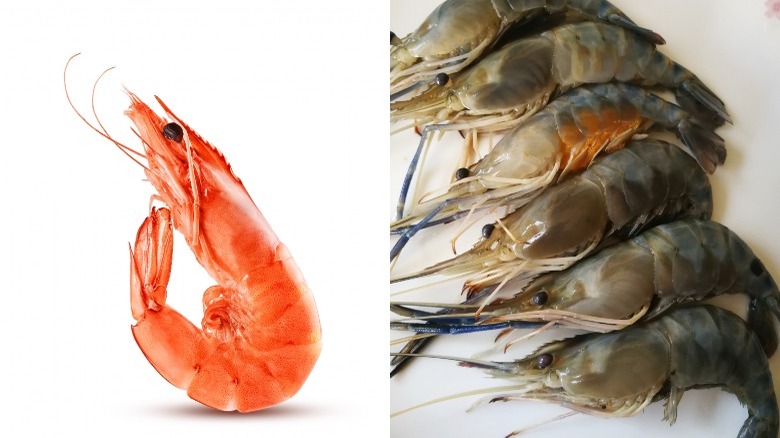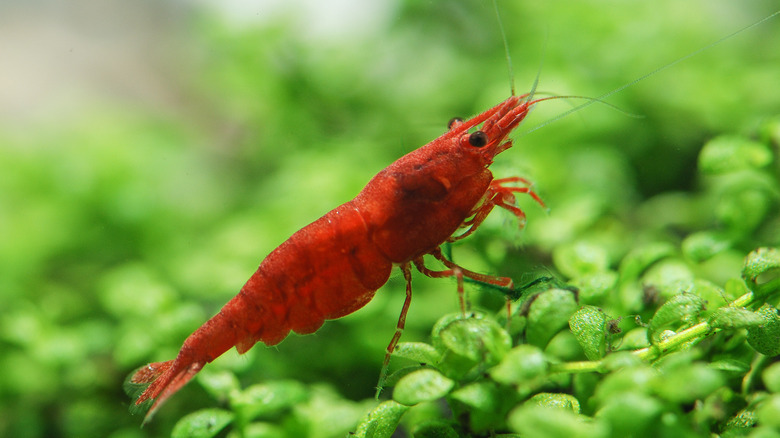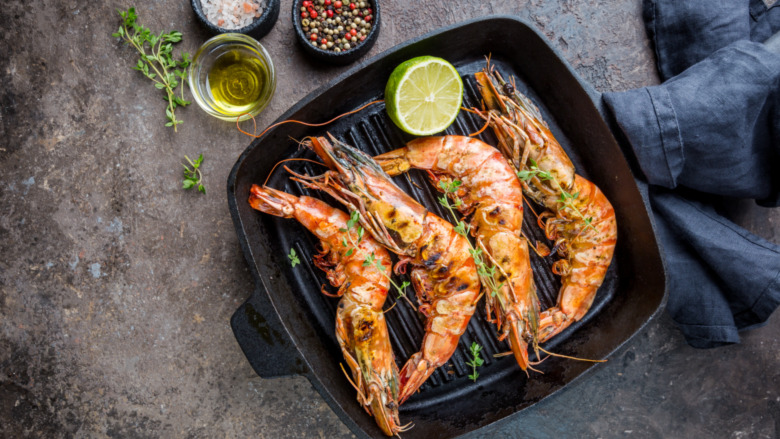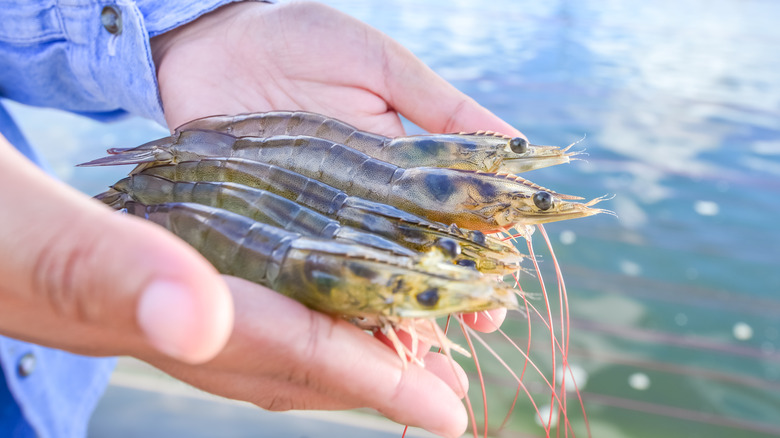The Real Difference Between Shrimp And Prawns
Perhaps you think "prawn" simply another word for "shrimp," the delicious crustacean we all know and love grilled, fried, or scampi. Or maybe you're under the impression a prawn is actually an oversized variety of shrimp, like how Beluga and Oestra are both types of caviar (via MasterClass). Well, we're here to tell you that both of these common beliefs are (perhaps surprisingly) wrong.
If you were among those shocked by the revelation, you're not alone — many people are unsure of the real difference between the two shellfish. Adding to the confusion, according to Serious Eats, is that our friends in the U.K., Europe, and Australia frequently substitute the word "prawn" for shrimp, while here in the U.S., real prawns are mistakenly referred to as shrimp just as often. As the outlet points out, there's no real explanation for these regional quirks.
Same order, different animal
Although New World Encyclopedia shares that both prawns and shrimp belong to the Decopoda, or "10-legged," order of crustaceans (which also includes lobster, crab, and crayfish), the fact is that shrimp and prawns are two distinct animals. Shrimp belong to the suborder Pleocyemata, while prawns are part of suborder Dendrobranchiata.
Physically, the most obvious difference between them and prawns is that shrimp are smaller in size and feature a distinctive curved shape, according to Southern Living. This shape comes from the fact that the second segment of their shrimp's shell overlaps both the first and third shell segments, pulling the animal's body inward. If you're buying your shellfish fresh, Diffen explains that you'll also be able to notice that shrimp have claws on two pairs of their legs, whereas prawns have claws on three pairs. Varieties of shrimp include white leg, Atlantic white, pink, dotted, and brown; common varieties of prawns are tiger, Indian, and giant river.
Different habitats result in slightly different flavors
Southern Living explains that most shrimp live in saltwater, while prawns come primarily from fresh or brackish waters. (An interesting note is that colder waters produce smaller shrimp, according to The Kitchn.) To get around, shrimp transport themselves by swimming through their salty waters, whereas prawns are crawlers, reports USA Today, living and eating from the beds of their bodies of water. This gives the two crustaceans different habitats, and thus, different flavor profiles: shrimp will be naturally saltier in flavor than prawns. Be sure to keep this fact in mind when cooking, as shrimp live in what is essentially a saltwater brine, whereas prawns will likely require a heavier hand when it comes to salting.
Americans consume more shrimp than prawns (about a billion pounds annually, says the South Florida Reporter), but worldwide, prawns are actually the more popular crustacean (via Food & Wine).
How to shop for shrimp and prawns
When shopping, it can be harder than you'd think to tell the difference between shrimp and prawns. While the packaging or your market's signage should be clear, shrimp and prawn labels can unfortunately be misleading, according to Oceana. Large shrimp are often mistakenly labeled as prawns, and (adding to the confusion) some shrimp actually have the word "prawn" in their name, such as the short-seasoned spot prawn (via Kitchn). If you are wondering which animal you're really looking at, check the way the shell segments overlap. As stated above, if the second segment overlaps both the first and the third, you have yourself a shrimp; if the first overlaps the second, and the second overlaps the third, then it's a prawn.
While The Kitchn says shrimp and prawns can essentially be used interchangeably in recipes, remember prawns are generally meatier and sweeter than shrimp. Experts also advise choosing wild-caught whenever possible, as they generally have a more intense, less muddy flavor than their farmed counterparts of the same species (via Bon Appétit).
For shrimp or prawns, wild-caught is best
According to USA Today, shrimp are for the most part going to be less expensive than prawns in the United States. The shrimp you find in grocery stores will usually be farm-raised instead of the wild-caught shellfish recommended by Bon Appétit, so keep that in mind when choosing the right price point for you. Sometimes, it makes sense to spend a little more for a higher quality product.
A final word: whether you're buying shrimp or prawns, try to avoid imported products. Most farm-raised, imported shrimp comes from places with lax seafood farming regulations, which can make their shrimp and prawns downright toxic, according to Epicurious. Not only is this bad for the shrimp, the environment in which they're being raised, and the people who are farming them, it could be bad for you as well. In 2015, Consumer Reports found a concerning variety of harmful bacteria like E.coli and listeria in grocery store shrimp, as well as antibiotic-resistant bacteria MRSA. Though properly cooking your shellfish should kill off these bacteria, they're probably something you'd like to avoid regardless. Choose well, and you can enjoy some sweet, succulent shellfish worry-free.
